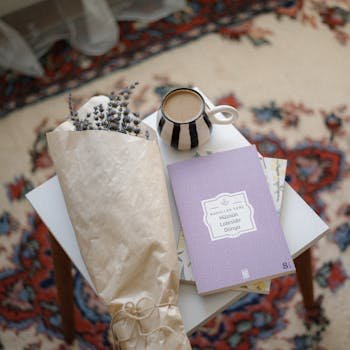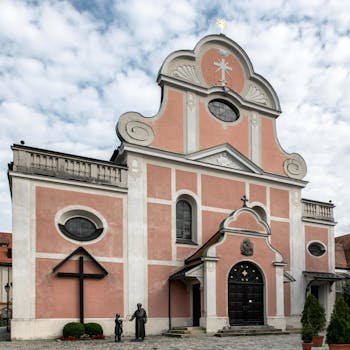Unveiling Fronleichnam: A Celebration of Faith and Tradition
Ever heard of Fronleichnam? If you’re planning a trip to Germany, Austria, Switzerland, or other Catholic regions in Europe around late May or June, you might stumble upon this vibrant and fascinating holiday. Fronleichnam, also known as Corpus Christi, is a public holiday in many of these countries, and it’s much more than just a day off work. It’s a celebration steeped in history, religious significance, and local traditions. In this guide, we’ll dive deep into what Fronleichnam is all about, explore its origins, understand its meaning, and offer practical tips for experiencing this unique event firsthand.
Get ready to discover:
- The historical roots and religious significance of Fronleichnam.
- How Fronleichnam is celebrated in different regions, from elaborate processions to traditional costumes.
- Practical tips for planning your trip around Fronleichnam, including where to go and what to expect.
- The cultural impact and enduring appeal of this important Catholic holiday.
The Origins and Meaning of Fronleichnam
To truly understand Fronleichnam, we need to journey back to the 13th century. The holiday was established in 1246 by Bishop Robert of Liège, Belgium, and later made a universal feast day by Pope Urban IV in 1264. This decision followed the visions of St. Juliana of Liège, who claimed to have seen a need for a feast day dedicated specifically to the Holy Eucharist.
The Significance of Corpus Christi
The name “Corpus Christi” literally translates to “Body of Christ.” Fronleichnam is a celebration of the Real Presence of Jesus Christ in the Eucharist, the consecrated bread and wine that Catholics believe become the body and blood of Christ during Mass. It’s a day to publicly profess faith in this doctrine and to honor the Eucharist outside of the usual context of Mass.
The selection of the date is significant, too. It always falls on the Thursday after Trinity Sunday, placing it approximately ten days after Pentecost. This timing allows Catholics to reflect on the gift of the Eucharist after celebrating the Holy Trinity and the descent of the Holy Spirit.
Essentially, Fronleichnam is a powerful public affirmation of faith, a visual and communal expression of belief in the central mystery of the Catholic religion.
Experiencing Fronleichnam: Traditions and Celebrations
Fronleichnam celebrations vary from region to region, but the core elements usually remain the same: a solemn procession, the display of the Blessed Sacrament in a monstrance, and public expressions of faith. The processions are often the most striking feature of the holiday.
The Grand Processions
The processions are not mere parades; they are carefully orchestrated religious events. Typically, they involve:
- Priests and clergy: Leading the procession, carrying the monstrance containing the Blessed Sacrament.
- Church members: Dressed in traditional costumes, often representing different religious orders, guilds, or local communities.
- Children: Many children, especially those who have recently received their First Communion, participate in the procession, often dressed in white.
- Local dignitaries: Mayors, council members, and other prominent figures from the community.
- Music: Bands, choirs, and church organists provide the soundtrack for the procession.
The procession typically winds its way through the streets of the town or city, stopping at specially decorated altars along the way. At each altar, prayers are said, hymns are sung, and blessings are given.
Regional Variations and Local Customs
While the core elements of Fronleichnam are consistent, local traditions add unique flavor to the celebrations. For example:
- Germany: In Bavaria, you might see elaborately decorated boats carrying the Blessed Sacrament on lakes or rivers.
- Austria: In some Austrian villages, the procession is accompanied by traditional folk music and dancing.
- Switzerland: In certain Swiss cantons, the procession includes the firing of cannons or the ringing of church bells.
One remarkable feature is the stunning floral decorations. Streets and altars are adorned with intricate floral carpets and displays. These are often created by volunteers over many hours, reflecting the community’s dedication to the celebration.
Food and Festivities
While Fronleichnam is primarily a religious holiday, it’s also a time for community gathering and celebration. After the procession, many towns and villages host festivals with food stalls, music, and entertainment. It’s a chance to relax, socialize, and enjoy the festive atmosphere.
Planning Your Trip Around Fronleichnam
If you’re intrigued by the prospect of experiencing Fronleichnam firsthand, here are some practical tips for planning your trip:
Choosing the Right Location
Not all regions celebrate Fronleichnam with the same level of enthusiasm. Some of the best places to witness impressive celebrations include:
- Bavaria, Germany: Known for its elaborate processions and traditional costumes.
- North Rhine-Westphalia, Germany: Many towns and cities host grand celebrations.
- Austria: Particularly the more rural regions, where traditions are deeply ingrained.
- Catholic cantons of Switzerland: Expect vibrant celebrations in areas with a strong Catholic heritage.
Checking the Dates and Local Schedules
Fronleichnam always falls on a Thursday, but the exact date varies from year to year. Be sure to check the calendar well in advance and confirm the local schedules for processions and other events. Many towns and cities publish their schedules online or in local newspapers.
Booking Accommodation in Advance
As Fronleichnam is a public holiday, many people travel to attend the celebrations. Booking your accommodation well in advance is essential, especially if you’re planning to visit a popular tourist destination.
Respecting Local Customs
Fronleichnam is a deeply religious event, so it’s important to be respectful of local customs and traditions. Dress modestly, avoid disruptive behavior, and be mindful of the solemnity of the occasion. Photography is generally permitted, but it’s always a good idea to ask for permission before taking close-up shots of participants.
Learning Basic Phrases
While many people in tourist areas speak English, learning a few basic phrases in German or the local language will enhance your experience and show respect for the local culture.
The Enduring Appeal of Fronleichnam
Fronleichnam is more than just a religious holiday; it’s a cultural phenomenon that reflects the history, traditions, and values of the communities that celebrate it. In a world that is increasingly secular, the enduring appeal of Fronleichnam is a testament to the power of faith, community, and tradition.
Even for those who are not religious, Fronleichnam offers a unique opportunity to witness a living tradition, to experience the beauty of religious art and music, and to connect with the rich cultural heritage of Europe. The intricate floral displays, the solemn processions, the colorful costumes, and the festive atmosphere all combine to create a truly unforgettable experience.
Ready to Experience Fronleichnam?
Now that you have a comprehensive understanding of Fronleichnam, why not start planning your trip? Whether you’re a devout Catholic, a curious traveler, or simply someone who appreciates cultural experiences, Fronleichnam offers something for everyone. Explore the destinations mentioned above, check the dates for the upcoming year, and prepare to immerse yourself in this captivating tradition. And don’t forget to share your experience with us! Tell us about your favorite Fronleichnam memory in the comments below.





